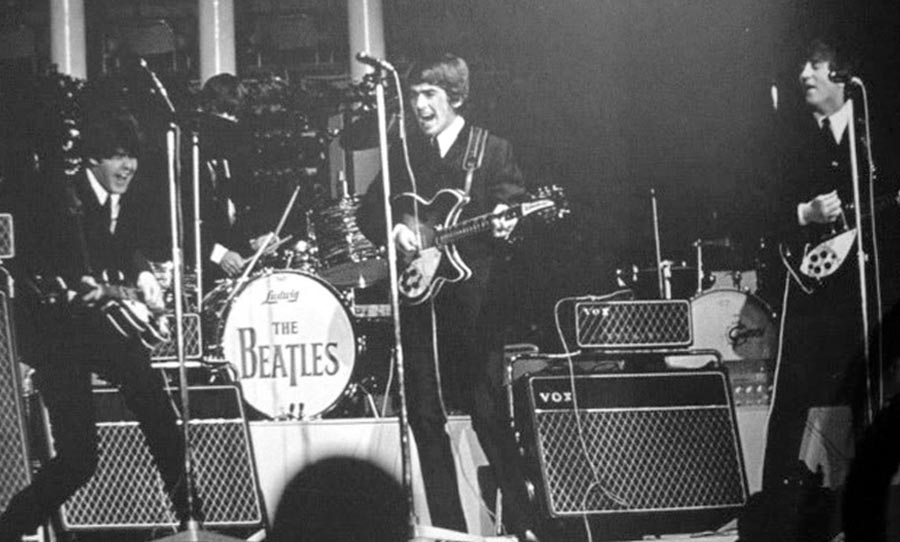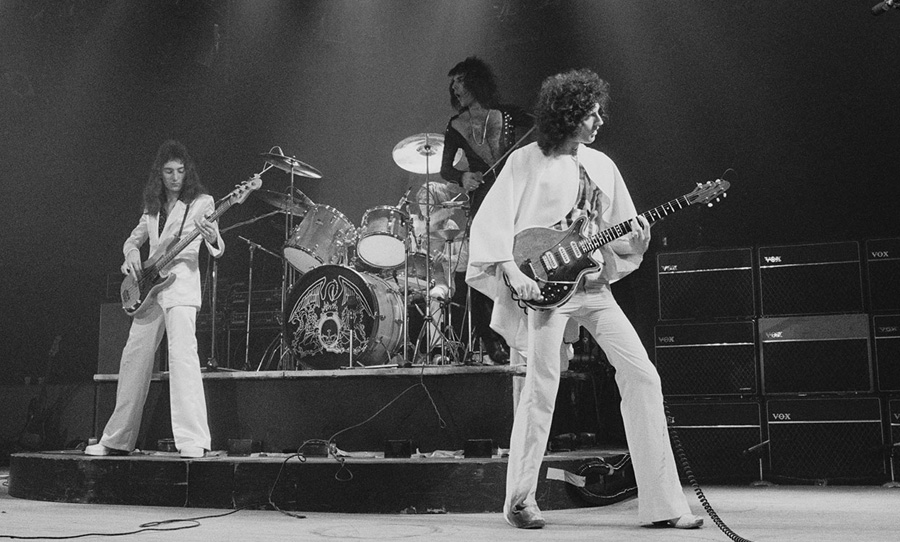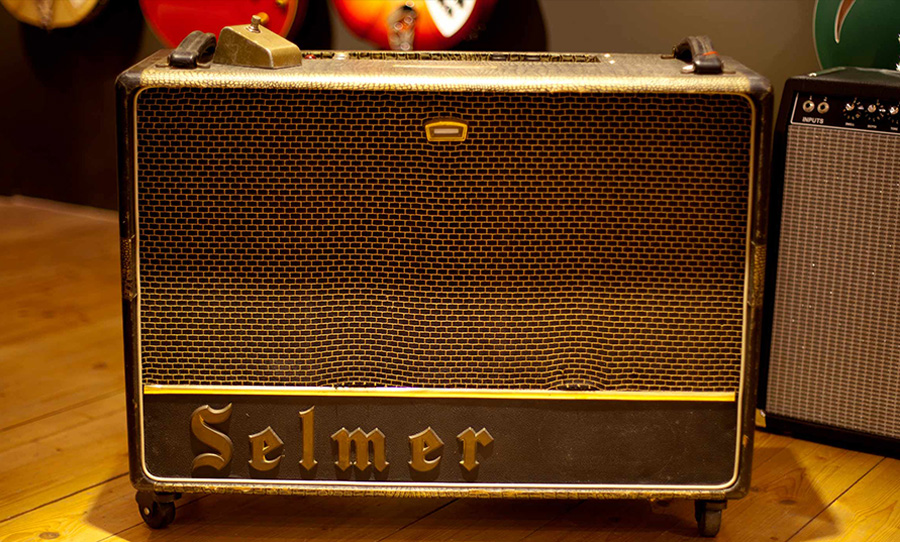One of the most widespread backline fixtures from the late 50s onwards, the VOX AC30 continues to rack up popularity points worldwide. Read on to discover a little about its history, and why it was so coveted.
Introduced to the world in 1959 as a big brother to the AC15, the VOX AC30 is widely lauded for its jangly, chiming high end. Sixty years later, the diamond cloth and gold detailing is as striking as it ever was, reminding any gearhead (or even casual audience) of its perpetually iconic status.
Quintessential British bands from across various epochs – from The Beatles and The Rolling Stones to Queen and Radiohead – have utilised the AC30 to colour their guitar tones. VOX, being a British company (though currently owned by Japanese company KORG), was instrumental in defining the look and sound of the British invasion, and played a hand in the broad influence that British bands have had on popular music from the 60s onwards.

Genesis
The first VOX amp was created by Dick Denny, an amplifier designer who worked for musical instrument manufacturer, JMI. In 1958, the first VOX amp, the AC1/15, was unveiled. It quickly gained popularity in British circles, notably being used to record the James Bond theme by Vic Flick, and by The Shadows, in its early days.
Soon after, the powerful AC30 emerged. It was developed as a reaction to the growing crowd sizes rock ‘n’ roll bands were beginning to draw in the late 50s and early 60s. Audiences were enthralled by this powerful new music and artists playing it, screaming and cheering in troves. With this, of course, came noise – too much noise, more than a modest 15-watt amp could handle. Guitarists needed more power.
The AC30 was made on request of Hank Marvin, guitarist for Cliff Richards. He loved the sound and functionality of the AC15, but it simply couldn’t reach above the volume of Richard’s fans.
And so, the AC30 was born. First models of the AC30 came stocked with four EL84 power tubes, and the same tubes used in the AC15 – essentially doubling the power of the 15 and hoping for the same result. The amp’s preamp section suffered with the higher output, so the original amps were prone to microphonics and noise, even failure.

Denny had to change the design to retain its unique chime, but still take on the volume dilemma. So the dimensions of the cabinet were increased, and an additional speaker was added.
The result was the AC30/4 Twin. Pumping out 30 watts with two 12” Celestion speakers, four inputs, and two channels – Normal and Vibrato – the more versatile and finessed amp quickly became the most desired in Britain.
Running through the backlines of the 60s with The Beatles and The Rolling Stones, the AC30 characterised the chime and swagger of the British Invasion – the rest of the world saw British musicians alongside the diamond grill print and heard the jangle.
The Second Coming
While this meant other movements and musical cultures were influenced by the amp, the next notable use was within the Brit-pop movement. Bands like Oasis, Blur, Elastica and Pulp created a new sense of patriotism in a nation newly emerging from more than a decade of conservative rule, carrying their heavy hardware with them. What better way to redefine British culture than by using the homegrown amplifier of their previous rock idols?
Boasting over 60 years of iconography, the AC30 can today be found as a solid-state, tube, vintage, modern, with normal, overdrive, and top boost channels – a variety of models as unique as the guitarists who play them.
That brightness
The tendency of a player to love or hate this amplifier usually comes as a reaction to its brightness. It is definitely not warm – thus not really popular in jazz circles – and the high end sparkles with a glassy, icy brightness.
This can be attributed to the amp’s cathode biasing and lack of negative feedback, features of the design that really influence the highs and upper-mids. If you listen to a Beatles or Oasis track, you can usually hear the distinct flourish at the top end. But if that treble tin isn’t enough for you…
Try the ‘Top Boost’
This feature was added to the AC30 to really drive home the trademark sound. The AC30 ‘Top Boost’ was marketed to chime at high volumes and low ones, retaining the archetypal “cut-through” no matter where the volume knob sat.
It came about firstly as a back-to-factory add-on in 1961, and then a standard option in 1964. The new ‘Top Boost’ circuit added another preamp tube to the signal chain, coupled with extra EQ for the input. This meant more for jangle lovers, and some extra grit when driven hard: a combination that defined the sound of Queen’s Brian May.


The Beatles’ Quest To Be Heard
The Beatles first became attached to the VOX AC30 after a sponsorship deal was struck requiring them to play VOX amps exclusively on stage. The Beatles embodied the sound and look of the classic amp, but as their crowd sizes got bigger than any artist before them, they needed even more volume.
So on top of the AC30, Vox provided The Beatles with an AC50 piggyback unit. They were also fans of the ‘Top Boost’, which required more specialised engineering from the company. Augmenting the sound included one of the first transistorised amplifiers, the T60 – but when the head overheated, the band used the AC30 head to power the separate speaker cabinet.
They also played around with experimental modifications of hybrid tube and solid state – lots of noise and tinkering to get above screaming, hysteric fans.
There is no wonder the VOX AC30 is amp royalty – it is among the most played and most loved amps. The vintage models helped define a generation, and they continue to inspire musicians today. If you are interested in further reading, try Vox Amps – The JMI Years by Jim Elyea for pages and pages on the different mods and outfits of the AC30.
The original British rock sound, the AC30 lives on through its ability to traverse many genres, while still maintaining its essential voice.


